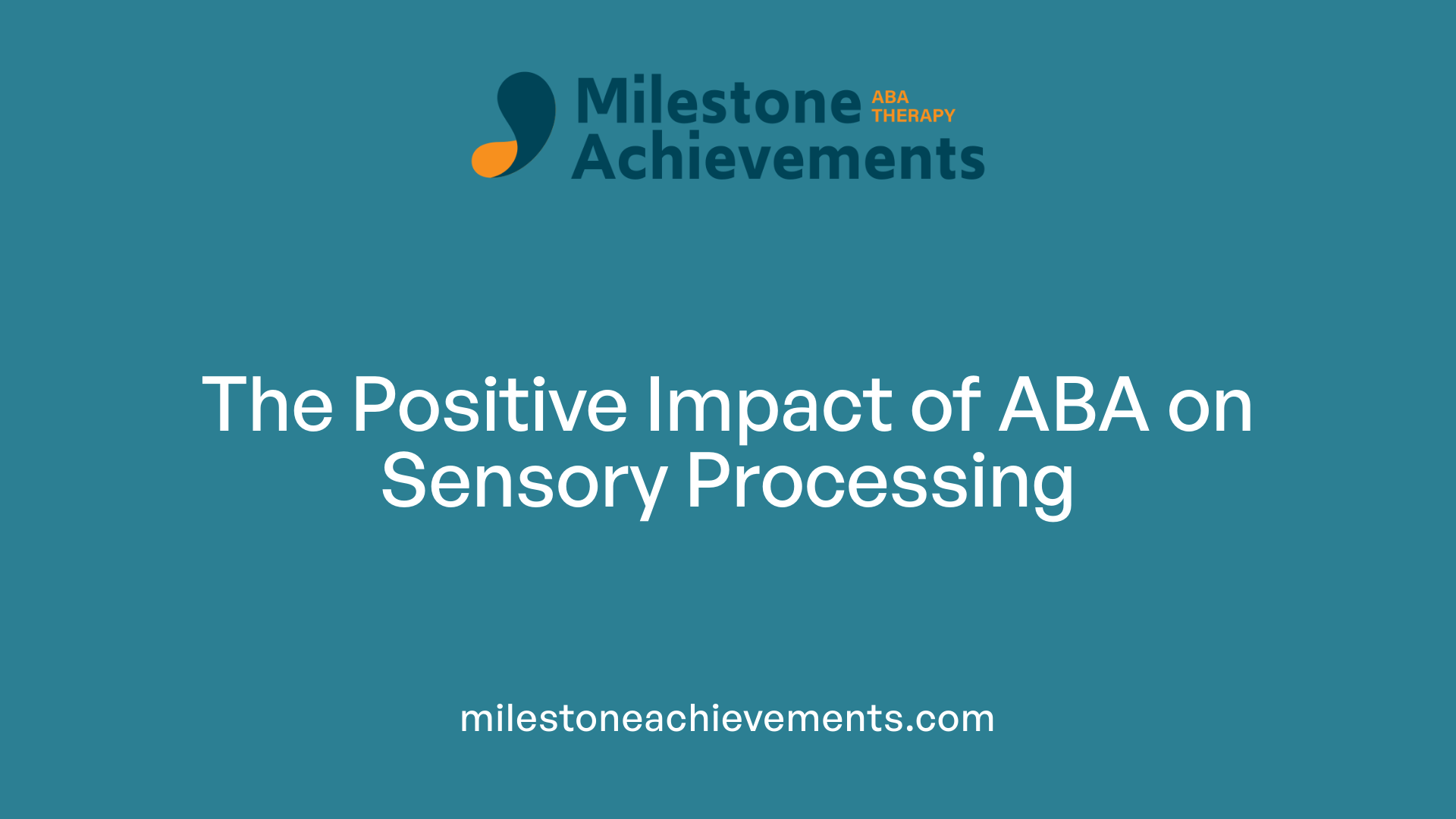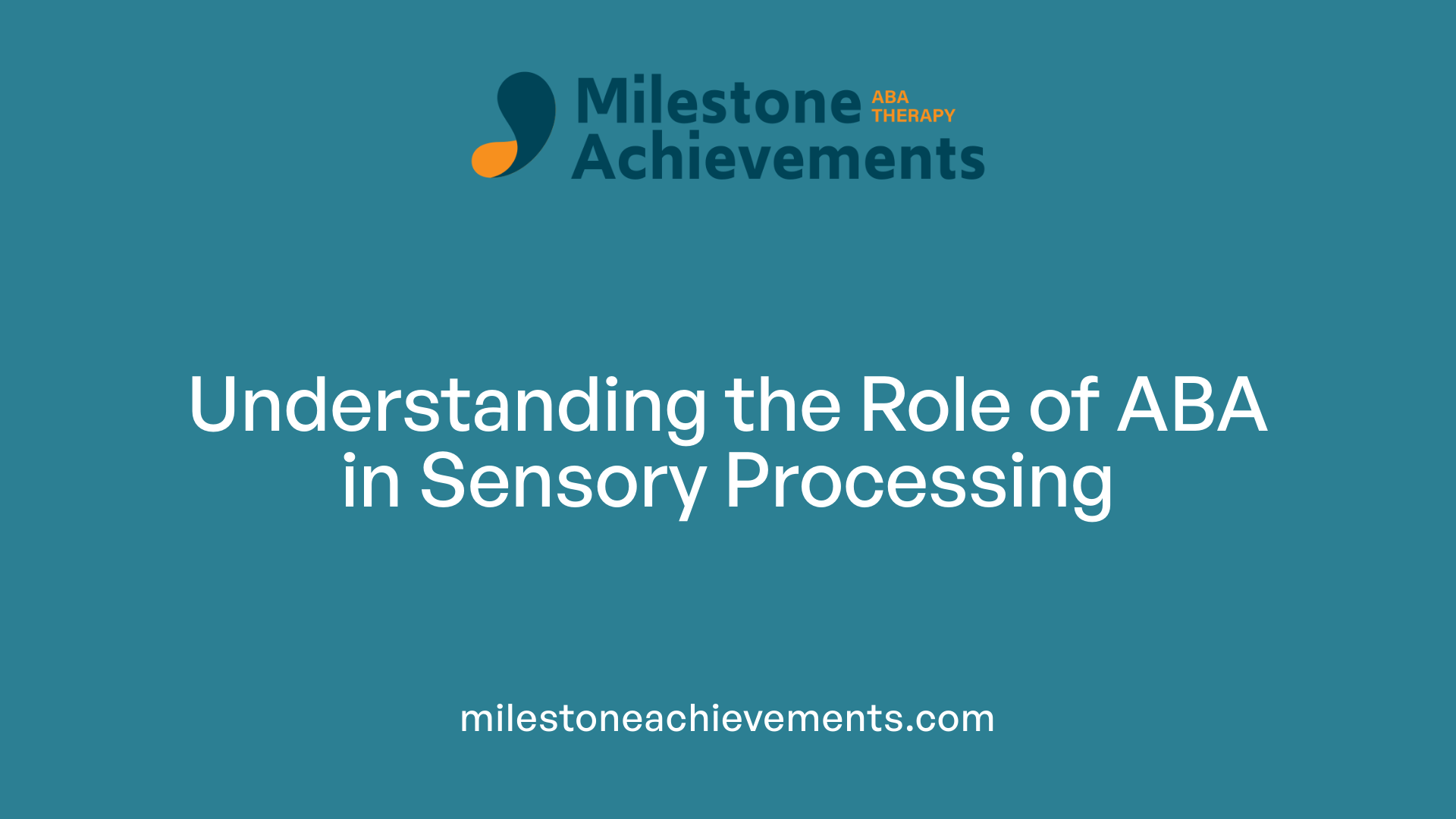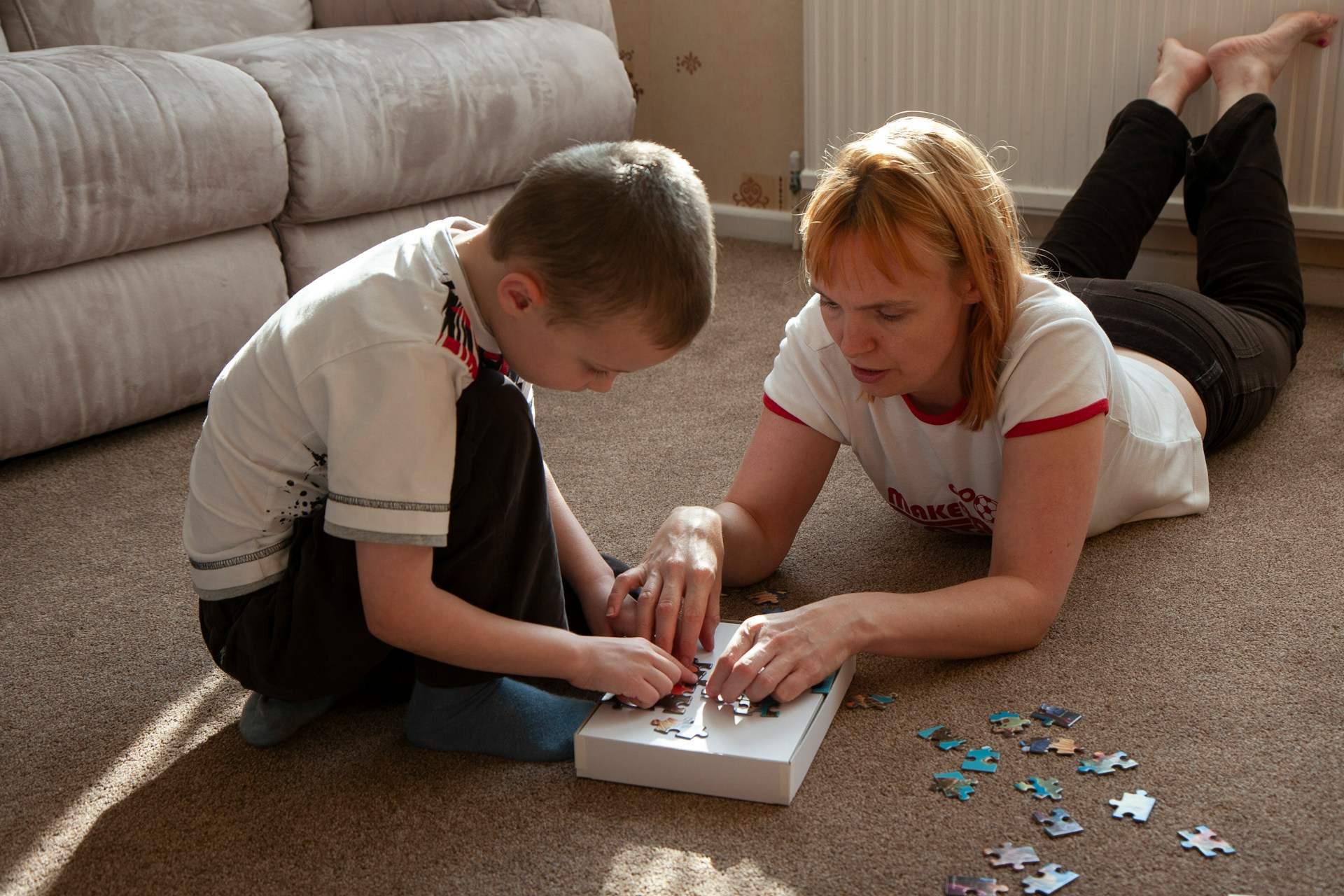
ABA and Managing Sensory Issues
Understanding How ABA Supports Sensory Regulation in Autism
Introduction to ABAs Role in Sensory Processing
Sensory processing issues are common among children and adults with autism, often leading to distress and behavioral challenges. Applied Behavior Analysis (ABA) has emerged as a scientifically backed approach to improving sensory responses, helping individuals navigate their sensory world more comfortably. This article explores the strategies, benefits, and practical applications of ABA therapy in managing sensory sensitivities across all ages.
The Foundations of ABA Therapy for Sensory Challenges

What are the basic principles of ABA?
Applied Behavior Analysis (ABA) is a science-based approach that focuses on understanding and changing behavior through evidence-driven strategies. In ABA therapy, positive reinforcement is a core principle—using praise, tokens, or tangible rewards—to encourage desirable behaviors. The goal is to replace unwanted or maladaptive behaviors with positive, functional skills.
ABA also emphasizes structured learning and systematic data collection to track progress. These principles help tailor interventions to each individual's needs, especially in developing skills like communication, social interaction, self-care, and problem-solving.
How does ABA replace maladaptive behaviors?
One of the main aims of ABA therapy is to replace behaviors that hinder daily functioning, such as tantrums or self-injury, with healthier responses. Therapists use gradual exposure to sensory stimuli, paired with positive reinforcement, so individuals become more comfortable over time.
In addressing sensory issues, ABA incorporates techniques like sensory integration strategies—deep pressure massage, weighted clothing, or sensory breaks—to help children tolerate touch and other senses. Such methods decrease distress and avoidance behaviors, promoting more adaptive reactions.
By consistently applying these techniques, ABA encourages individuals to develop coping strategies. For example, teaching visual cues or relaxation techniques helps manage sensory overload, leading to improved emotional regulation.
How does ABA promote adaptive functioning skills?
ABA therapy includes training parents and caregivers, empowering them to support their child's progress at home and in other settings. This parent training is vital for ensuring skills are generalized across different environments.
Skills covered include self-care routines, effective communication, social skills, and problem-solving. The therapy also promotes independence and job readiness, focusing on teaching practical skills necessary for daily and workplace success.
Furthermore, ABA emphasizes creating sensory-friendly environments and offering sensory activities that improve focus, reduce stress, and enhance social interactions. Activities like proprioceptive and tactile exercises are part of these strategies.
How does ABA therapy address sensory processing issues in children and individuals with autism?
ABA therapy tackles sensory processing issues by identifying specific triggers—such as loud noises, bright lights, textures, or smells—and implementing tailored strategies. Therapists work closely with caregivers to recognize these triggers and develop individualized plans.
Gradual desensitization and reinforcement help individuals tolerate sensory stimuli better. For example, systematic exposure paired with positive rewards reduces avoidance or distress behaviors.
Sensory integration techniques like sensory diets, movement activities, and environmental adjustments are incorporated to support better sensory responses. The goal is not to change how the brain processes sensory input directly but to foster adaptive behaviors and responses.
Overall, ABA aims to improve not only behavioral outcomes but also emotional well-being and daily functioning, making sensory challenges more manageable for children and teens.
Techniques and Strategies in ABA for Sensory Management
What techniques and strategies are used in ABA to manage sensory sensitivities and challenges?
ABA therapy employs a range of practical methods to help individuals deal with sensory sensitivities. One prominent approach is gradual desensitization, where children are introduced to sensory stimuli slowly and systematically. During this process, positive reinforcement, such as verbal praise or tokens, encourages children to tolerate stimuli like loud noises or textures without discomfort.
Another essential component involves sensory integration activities. These include swinging, deep-pressure massage, and the use of sensory diets—customized plans that incorporate various sensory activities designed to help regulate the nervous system. For instance, weighted clothing or blankets can provide calming deep pressure, while vestibular activities like rocking or swinging may improve balance and tolerance.
Creating supportive environments through modifications is also crucial. This can mean setting up sensory-friendly spaces free from excessive bright lights or loud sounds or offering sensory tools like noise-canceling headphones, fidget toys, or textured materials to help manage sensitivities.
The success of sensory management in ABA often depends on collaboration. ABA therapists work with occupational therapists to develop personalized strategies that align with the child's unique sensitivities and needs. Together, they focus on teaching coping skills such as visual cues or deep-breathing exercises, which children can use when faced with challenging sensory situations.
Overall, these techniques aim to promote better sensory integration, reduce distress, and support children in engaging confidently with their surroundings. Regular use helps children not just respond to sensory stimuli more effectively but also generalize these skills across different settings, leading to improved daily functioning and well-being.
Benefits of ABA Therapy in Sensory Processing

What are the benefits of ABA therapy in improving sensory processing and reducing sensory-related challenges?
ABA therapy offers a structured approach to helping children better manage their sensory sensitivities. Through techniques like controlled exposure to sensory stimuli and positive reinforcement, ABA helps desensitize children gradually, making them more comfortable in various environments. For example, children may be supported in tolerating loud noises or bright lights using explicit rewards and reinforcement.
In addition to desensitization, ABA integrates sensory activities such as tactile and vestibular exercises. These activities enhance the child's ability to process sensory information accurately, reducing behaviors caused by hypersensitivity or hyposensitivity. Children learn to recognize sensory triggers and employ coping methods like visual cues, sensory tools, or relaxation techniques.
Another significant benefit is the development of self-regulation skills. ABA teaches children how to communicate their sensory needs and manage overwhelming situations independently. This could include strategies such as requesting a sensory break or using sensory-friendly accessories like sunglasses or noise-canceling headphones.
Overall, ABA therapy not only reduces maladaptive behaviors linked to sensory dysfunction but also promotes greater emotional regulation. It supports children in gaining confidence and participation in daily routines, leading to improved social interactions and increased independence.
Enhancing sensory tolerance and emotional well-being has a positive impact on family life, school participation, and future adaptive functioning, making ABA a valuable intervention for sensory processing challenges.
Supporting Across the Lifespan: ABA for All Age Groups
How does ABA support individuals with sensory sensitivities across different age groups?
ABA (Applied Behavior Analysis) offers tailored approaches to help individuals of all ages manage sensory sensitivities effectively. For children, ABA incorporates sensory integration techniques such as sensory diets, which include activities like deep pressure massage, weighted clothing, or caloric sensory movement exercises. These techniques facilitate gradual desensitization and improve a child's ability to interpret and respond to various sensory stimuli constructively.
In adolescents and adults, ABA strategies shift toward strengthening coping mechanisms and self-advocacy skills. This includes teaching relaxation techniques, visual cues, and proactive planning to handle sensory overloads, especially in public or work environments. Creating sensory-friendly environments, such as quiet workspaces and access to sensory tools, helps reduce stimuli that cause distress.
Early intervention plays a crucial role, especially in childhood, by building foundational skills and preventing long-term challenges related to sensory processing. Continuous monitoring and collaboration with caregivers or support staff ensure that strategies stay relevant as individuals grow and their needs change.
Overall, ABA is a flexible, evidence-based approach. It adapts to developmental stages and personal requirements, supporting individuals throughout their lives to better manage sensory sensitivities, participate meaningfully in daily activities, and improve overall well-being.
ABA Interventions for Sensory Processing Disorders (SPDs)

How can ABA interventions assist with sensory processing disorders?
ABA therapy is a proven approach for supporting children with sensory processing challenges. It begins with identifying specific sensory triggers, such as loud noises, bright lights, or certain textures, through detailed assessments using parent questionnaires and clinical observations.
Using this information, ABA therapists employ a variety of techniques. Desensitization protocols gradually expose children to sensory stimuli in a controlled, positive way. Reinforcement strategies include rewarding adaptive responses, like tolerating a noisy environment, with praise or tangible rewards.
Sensory integration activities are incorporated within ABA sessions. These might include deep pressure massage, weighted clothing, or sensory diet activities designed to help children get used to touch sensations and tolerate various stimuli.
ABA also teaches coping strategies to better manage sensory overload. Children might learn to use sensory toys, take sensory breaks, or employ relaxation techniques such as deep breathing, helping them respond more healthily to sensory input.
Beyond improving sensory responses, ABA supports emotional regulation and helps children develop routines that build confidence and independence. For example, teaching self-regulation skills like requesting a quiet space when overwhelmed can reduce stress and improve daily functioning.
Overall, ABA offers a structured, evidence-based framework for customizing interventions that target sensory sensitivities, resulting in increased comfort, better participation in daily activities, and improved emotional well-being.
Implementing ABA Strategies in Different Settings

How can ABA strategies be applied to manage sensory issues in various environments?
Applied Behavior Analysis (ABA) offers practical methods for helping individuals with sensory sensitivities adapt and thrive. These strategies are versatile and can be effectively used in multiple settings, including schools, workplaces, homes, and community environments.
In educational settings, ABA techniques facilitate a sensory-friendly atmosphere that supports focus and reduces distress. For example, sensory diets—calculated activities tailored to individual sensory needs—can be scheduled to help students regulate their sensory input. Visual schedules and environmental modifications, like dimming lights or reducing noise levels, contribute to a calmer learning environment.
Workplaces can adopt ABA-inspired accommodations to support employees with sensory sensitivities. This might include scheduled sensory breaks, flexible workspace arrangements, or noise-canceling devices. Putting coping strategies like visual cues or relaxation exercises into practice also helps employees manage sensory overload.
Across all environments, the principles of ABA—such as systematic desensitization, positive reinforcement, prompting, and modeling—are key. These techniques assist individuals in gradually building tolerance to sensory stimuli and developing self-regulation skills.
Collaboration is essential across settings. Parents, teachers, and therapists working together ensure the consistency and effectiveness of sensory strategies. This teamwork guarantees that support is coherent, no matter whether the individual is in school, at work, or in the community.
In summary, ABA strategies are adaptable tools that can be tailored to various environments, helping individuals with sensory challenges improve their participation and quality of life.
Conclusion: Empowering Individuals with Sensory Strategies

What is the importance of ABA in managing sensory sensitivities?
ABA therapy is essential in helping individuals cope with sensory sensitivities. It is a structured, evidence-based approach that tailors interventions to each person's unique sensory profile. By using positive reinforcement and sensory integration techniques, ABA helps individuals recognize their sensory triggers—such as loud noises, bright lights, or certain textures—and develop effective coping skills. This process promotes self-regulation, making daily routines less overwhelming and improving overall emotional well-being.
ABA strategies often include gradual desensitization, teaching calm responses, and replacing distress behaviors with adaptive ones. Working closely with families and multidisciplinary teams ensures interventions are comprehensive and personalized.
The ultimate goal is to support individuals in participating more actively in social, school, and work environments. Through these efforts, ABA empowers individuals to gain independence, self-advocacy skills, and confidence in managing their sensory experiences.
The importance of a multidisciplinary approach
Addressing sensory sensitivities effectively requires a coordinated effort among healthcare providers, therapists, educators, and families. Besides ABA, sensory integration techniques and occupational therapy play pivotal roles.
Professional assessments, like questionnaires and direct observations, help identify specific sensory challenges. Combining these insights with behavioral strategies ensures focused intervention plans.
A multidisciplinary approach maximizes the benefits by providing various tools, from sensory-friendly environments to coping strategies and skill-building activities, ensuring comprehensive support for every individual.
Encouraging self-advocacy and independence
As individuals with sensory sensitivities grow, supporting their ability to advocate for themselves becomes crucial. Teaching them to recognize their sensory needs and communicate effectively fosters independence.
Strategies include using visual cues, requesting accommodations at work or school, or applying calming techniques like deep breathing.
Creating sensory-friendly workplaces and social settings enables individuals to manage sensory overload proactively. Encouragement and education empower them to take control of their sensory health, leading to increased confidence and improved quality of life.
Wrapping Up: Enhancing Quality of Life through Sensory Management
ABA therapy offers comprehensive tools and strategies to help individuals with autism and sensory sensitivities thrive across all areas of life. By identifying triggers, teaching adaptive responses, and modifying environments, ABA supports emotional regulation, social participation, and independence. Emphasizing collaboration with families and professionals, ABA continues to be a vital resource in creating sensory-friendly settings and empowering individuals to handle sensory challenges effectively, enriching their overall quality of life.
References
- How Does ABA Therapy Help With Sensory Processing?
- Managing Sensory Sensitivities in Autism | AutismCOE
- Working with Autism and Sensory Sensitivities: 3 ABA Tips!
- Managing Sensory Issues in Teens - Therapyland
- Sensory Processing Disorder Test and ABA
- All You Need to Know About ABA and Sensory Integration Therapy
- Can ABA Help with Sensory Issues? Discover the Benefits
- Introduction - Sensory integration therapy for children with autism ...


Partner with us on your child's journey
Milestone Achievements offers evidence-based ABA therapy to help children with autism reach their full potential. Together we’ll set meaningful goals and celebrate progress every step of the way.
Start ABA Services Today





